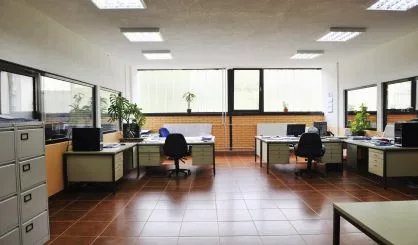

The days of non-fungible tokens (NFTs) and their collections skyrocketing into the multi-millions could be over, as the realm of these colorful, blockchain-encrypted JPEGs may be seeing a substantial NFT crash. If NFT sales are to recover from a market collapse, spurred by the FTX fallout, crypto winter, and NFT frenzy fatigue, experts forecast a second coming that reintroduces the role of NFTs in Web3.
As Katie Richman, Meta’s partnerships lead who oversees new product experimentation, wrote in her Medium blog, A Metaverse Manifesto, “[The NFT bubble burst is] not the end of NFTs. It’s the end of dumb NFTs.”
An NFT bubble refers to an unsustainable economic trend marked by a rapid, marketwide price inflation of NFTs, often characterized by widespread hype and an influx of speculative investments driving demand. Bubbles form when the market value of NFTs outpaces their intrinsic value across the board.
“Bubbles” can occur across any industry when asking rates escalate beyond reason or historical norm. Ironically, these overblown conditions are typically full of hot-air speculation, as seen with the internet startups behind the 1990s-era dot-com bubble as well as unregulated money lending that blew up the housing bubble, setting off the Great Recession.
Eventually, demand deflates, and such is the case for NFTs. This has resulted in market downturns and a subsequent NFT market collapse.
“NFT bubbles are a product of market euphoria,” said Solo Ceesay, the CEO and co-founder at Calaxy, a blockchain-backed social marketplace that allows content creators to easily monetize digital interactions with fans and followers. “In bull markets, sometimes prices reach nonsensical levels as investors get too comfortable with one-way, positive price action.”
Bubbles themselves are not one-time events. If anything, they’re a necessary part of market cycles that lead to corrections, Ceesay said. And, if current market conditions continue, this may be the first bubble on record specific to NFTs.
Although current NFT market conditions reflect a future crash (or already has, depending on who you ask), Michel Caspers, co-founder of software development company Unity Network, chalks it up to a maturing market outgrowing its infancy. There’s too much unlived potential for it all to collapse to a halt just yet, he said.
“The NFT bubble was mostly the initial start of the NFT market as we know it, where digitized ‘art’ was sold for way too much money,” Caspers said. “Everyone who participated had a form of gold fever, and many with a realistic view already saw that this was not sustainable.”
The NFT bubble began in January 2022, when the trading volume skyrocketed to $17.6 billion at a 21,000 percent increase compared to the previous year, according to a 2021 report by NFT analytics platform Nonfungible.com.
The report disclosed buzzing market activity. Active users — tallied by the number of registered crypto wallets — jumped from 89,000 to 2.5 million. The number of buyers increased by nearly 3,000 percent, and sellers by 3,700 percent.
Price drops, low trade volumes, and waning media coverage inform investors that NFT market collapse is imminent. Reuters started reporting signs of an NFT crash as early as April 2022, but most reports rolled in later that same year. Although the consensus seems to agree that the NFT market did, in fact, crash in the final quarter of 2022, Forbes questioned how a market can be considered “collapsed” while its gold standard, the Bored Ape Yacht Club, was still selling upwards of $100,000 a pop.
“I think the bubble has a leak in it, but no — it hasn’t completely burst,” said Andy Treys, the founder of NFT art collection Cereal Club. “There’s been a market correction, and, in my opinion, that needed to happen.”
Meanwhile, some experts like Caspers state an NFT crash has certainly occurred. “Yes, the bubble has burst,” he said. “And that is a positive thing.”
Fintech regulatory attorney Felix Shipkevich has it that the NFT market has collapsed, but for no singular reason.
“What’s different about this specific burst, unlike other market fallouts, is that there was really no specific event that was a catalyst triggering a major downfall,” said Shipkevich, head of law firm Shipkevich PLLC, and law professor at Hofstra University, where he lectures about global finance including cryptocurrency. “Essentially, it boils down to a significant loss of interest.”
Leading marketplace OpenSea reported a 97 percent dip in trading volume between January 2022 and September 2022, according to decentralized application data analytics platform DappRadar. Trading volume peaked at almost $256 million on May 1, 2022. Today, that number is a fraction of what it once was — $4.4 million as of May 15, 2023 — with little movement since its all-time low of $3.98 million recorded in November 2022.
Even Bored Ape Yacht Club, a 10,000-piece collection and consistent market leader, is currently experiencing a fall in prices. While its highest price reached over $422,000 in 2022, the average price for a Bored Ape Yacht Club NFT sits at nearly $59,000 as of May 2023.
“The exploding market and excessive greed from these so-called ‘investors’ exposed the [NFT] market as not sustainable,” Caspers said. “In what world is paying $25 million for a pixelated avatar a sound investment?”
Up or down, the NFT market created new opportunities. There are “get-rich-quick” schemes, also known as rug pulls, that failed to produce any plans for longevity alongside more legitimate pursuits, such as NFT art collections, which turn fans into investors. Often, these struggle to retain long-term value, Shipkevich said.
“Many NFT investors eventually realized that the price of those art-type NFTs really wasn’t worth it,” Shipkevich added, noting the success of alternative varieties, such as utility NFTs with built-in use cases. “As we’ve seen in recent months, some people paid millions of dollars for NFTs that, today, they are trying to ‘get rid of’ for a mere few thousand bucks — if they are so lucky to get that much.”
From what Treys makes of it, the ongoing market downturn is a growing pain of sorts, weeding out the “pretenders” from the NFT space. The collectors, creators, and companies who believe in NFTs are here to stay, Treys said. “Now we’re going to see who really believes in the value over the long haul.”
Aside from a two-week spike of transaction activity in December 2022, active wallets have nearly halved during that same timeframe, with low participation demonstrating a loss in consumer confidence since the bubble began in January 2022.
Google trends data also substantiates waning media coverage and public interest, showing an 88 percent decline in worldwide web searches for the term “NFT” over the same time span.
“Measuring the discourse around NFTs is a good way to monitor the sentiment of the market and identify risk,” said Ceesay, Calaxy’s co-founder. And although NFTs drummed up an impressive amount of traffic based on Google searches alone in 2021, according to Ceesay, there is a strong likelihood that the first-time investors who flooded a booming market overlap this pool of web searchers, grasping the basics of NFTs.
“People were committing substantial capital to purchase these assets without conducting due diligence or educating themselves sufficiently, which of course is a recipe for disaster,” he said. “When patterns like this begin to occur, a high level of associated risk becomes inevitable.”
Despite the beating NFTs have experienced from the FTX fallout, regulation and property rights, and a relentless crypto winter, it doesn’t seem like the Web3 community is ready to give up on NFTs just yet.
“The NFT market space is really a lot of fun and does provide value for certain products,” Shipkevich said, noting their potential to authenticate one-of-a-kind products. “It would certainly make a lot more sense to use this type of technology in order to preserve the right ownership and future change of ownership between parties.”
Unity Network’s Caspers listed some practical applications on the horizon. Ownership of physical assets, like houses and cars, could one day be registered as NFTs. Certificates, diplomas, and tickets would be stored in wallets as unique digital tokens, eliminating scammers and scalpers in one fell swoop. He imagines that this blockchain-tech renaissance will occur sooner rather than later. Right now, for example, Caspers’ company is developing an NFT ticket and event platform named EveCom.
Some experts found NFTs better suited as Web3 tools with real use cases than what they have been applied as thus far — a canvas for clout-chasing collections and profile picture avatars. So far, there has been notable success with tokenizing charitable initiatives and using NFTs as means to re-monetize the music industry.
Letting NFTs die out before they’ve been able to showcase their multi-use functionality is not an option, Treys said.
“NFTs will be a big part of our future,” he said, highlighting the barely tapped potential of smart contract technology, which are self-executing programs that automate transactions based on pre-set conditions. Treys give it about a decade before our main mode of digital transference swaps PDFs for NFTs. This includes land deeds, transcripts, patents, medical records, and so on. “Every digital document will live on the blockchain.”
Source






